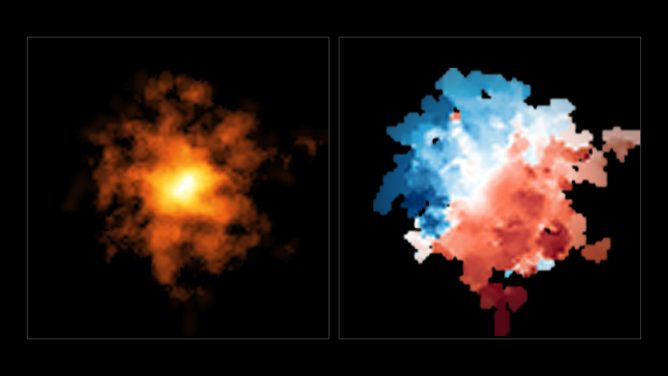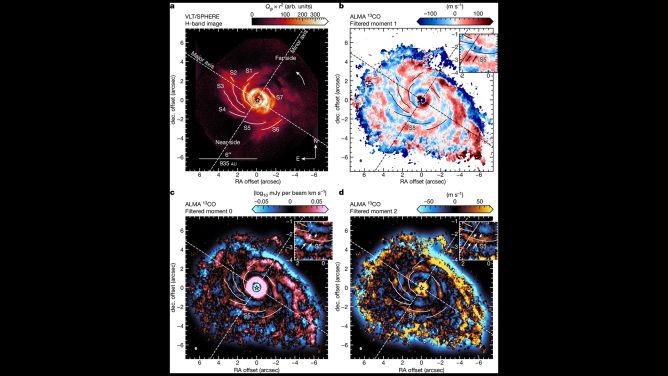National Astronomical Observatory of Japan (NAOJ) achieved a major milestone in the construction of ALMA. In December 2013, NAOJ successfully completed the development of the ALMA receivers for three frequency bands. The fabricated receivers are being shipped one by one to Chile and mounted on the antennas. Scientists and engineers are performing various tests with the receivers toward the start of scientific observations.
ALMA has 10 receiver bands to cover a wide range of observing frequency. All antennas are equipped with dedicated receivers for each frequency band. NAOJ Advanced Technology Center assumes the development of three bands: Band 4 (receiving frequency: 125 to 163 GHz, millimeter-wave); Band 8 (385 to 500 GHz, submillimeter-wave); and Band 10 (787 to 950 GHz, Terahertz-wave).
Since the receivers are installed in all the 66 ALMA antennas to cover all 10 frequency bands, the development team needs to prepare 73 state-of-the-art receiver cartridges for each band (including backup). The production of the Band 4 and Band 8 receivers have already been completed, and the assembling and performance test of the 73rd Band 10 receiver cartridge finished in December 2013.
Photo: Band 10 receivers at NAOJ (wraparound panorama)
Tap here for smartphone and tablet devices.
Confirming the completion of the development, Satoru Iguchi, a professor at NAOJ and the East Asian ALMA Project Manager says “I am very glad that the development of the receivers has been completed, because the receiver development was one of NAOJ’s major contributions to ALMA. The ALMA receivers boast unprecedented sensitivity in those frequency ranges. We are looking forward to seeing many exciting observation results with these receivers.”
The receiver cartridges are being carefully packed and shipped to Chile, and mounted on the antennas after on-site performance tests. Scientists and engineers in Chile are performing test observations with these receivers for the start of scientific observations. The Band 4 and Band 8 receivers have already captured first interferometric images, while the Band 10 receivers have obtained a first interferometric fringes in the test observations. You can find the details of the observation results on the following links.
Links
June 27, 2013: Successful ALMA First Radio Imaging with Japanese Band 4 Receiver
September 2, 2013: The world’s first interferometric image at 500 GHz with ALMA Band 8 receivers
November 1, 2013: Successful Interferometer Test with Japanese Band 10 Receiver—Birth of Highest Frequency Radio Interferometer
The Band 4 and Band 8 receivers will be made available to the researchers all over the world in the “Cycle 2” observations starting from June 2014. The Band 10 receivers will go through further test observations to achieve the highest observing frequency ever recorded as a radio interferometer.
The picture shows the Band 4, Band 8, and Band 10 receiver cartridges (from left to right) developed by NAOJ.










